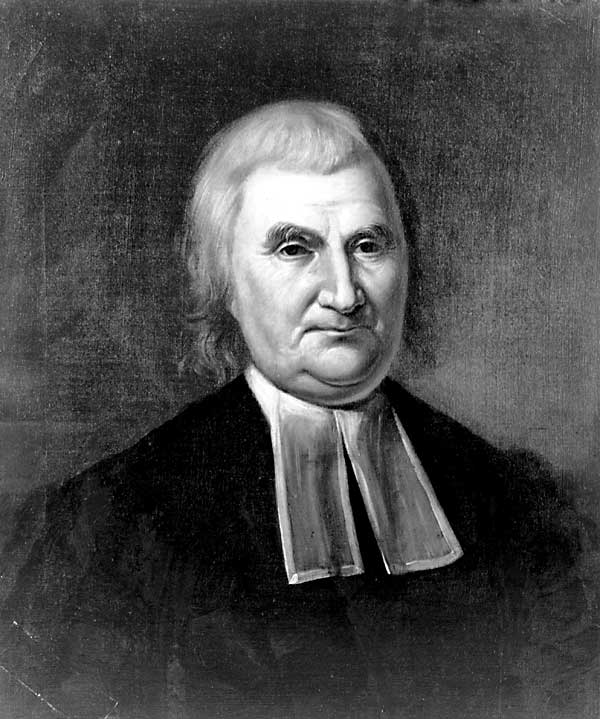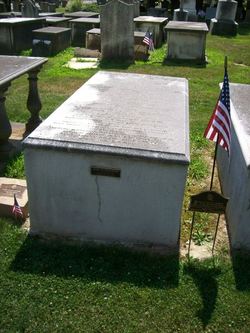JOHN WITHERSPOON

John
Witherspoon was born on 5 February 1723 in Gifford, Scotland to a family with
traditions in the ministry. Witherspoon
attended the University of Edinburgh, and after graduation was licensed to
preach, in 1743. Two years later, he was
ordained.
[5] The Articles were approved by the Congress in 1777, but not finally ratified by the states until 1781. The signatures of Witherspoon and Nathaniel Scudder, the two New Jersey representatives, are dated 26 November 1778.

On
17 January 1746, Witherspoon was among a number of witnesses of the Battle of
Falkirk, during the Jacobite Rebellion in Scotland. Following the defeat of the royal troops of
George II, Witherspoon was captured by the rebels, and imprisoned in the castle
of Doune for a short time. About two
years after his release, Witherspoon married Elizabeth Montgomery, [1] with
whom he had 10 children. [2]
In
1766, Witherspoon was invited to be the President of the College of New Jersey
(Princeton University, today). He
declined, mainly because his wife did not want to leave her homeland. However, upon the urging of Richard Stockton
(soon to be a fellow signer of the Declaration), who was visiting Scotland,
Witherspoon accepted. [3] He arrived in
New Jersey during the summer of 1768, and was inaugurated President of the
College on 17 August. The College began
to flourish under him.
Witherspoon,
already with a poor view of English rule, spoke out against the English in
speeches and sermons as unrest grew in the colonies. From 1774 to 1776, he served as a
representative in the New Jersey Provincial Assembly, and he sat in local
committees of correspondence.
Witherspoon was involved in the arrest and removal of Governor William
Franklin from office in early 1776. [4] He was then appointed as a delegate to the
Continental Congress meeting in Philadelphia, taking his seat on 29 June 1776.
On
2 July 1776, while debating the merits of Richard Henry Lee’s proposal for a
declaration of independence, Witherspoon stood and gave a speech in favor of
its passage, and shortly thereafter, affixed his name to the document. He sat in Congress until 1782, serving on
committees of military and foreign affairs. He also signed the Articles of Confederation,
which served as the first
constitution of the new United States. [5]
Following
the war, Witherspoon worked to rebuild the College of New Jersey, which had
been used as a barracks by both the British and Americans during the war. He also sat in the state legislature from
1783 to 1789, and attended the New Jersey Convention which ratified the U.S.
Constitution in 1787.
Following
the death of Elizabeth, Witherspoon took a second wife in 1791. Ann Dill was 44 years his junior. With her, he had two daughters. Soon afterwards, Witherspoon went blind. Despite this handicap, he continued to serve
as President of the College of New Jersey, and as minister to his congregation,
until his death on 15 November 1794.
Witherspoon was buried in the Presidents’ Plot at Princeton Cemetery,
only yards away from a street that bears his name.
[1]
Goodrich, Charles A. Lives of the
Signers to the Declaration of Independence. New York: William Reed &
Co., 1856.
[2]
Five of those children survived childhood; among them, James died at the Battle
of Germantown in Pennsylvania, on 4 October 1777; John became a physician;
David entered the practice of law; a daughter, Frances, married Dr. David
Ramsay, a Congressman who wrote one of the first major histories of the
Revolutionary War; a second daughter married Samuel Stanhope Smith, a minister
who followed Witherspoon as President of the College of New Jersey.
[3]
Lossing, Benson J. Lives of the Signers
of the Declaration of Independence. New
York: Derby & Jackson, 1859.
[4]
National Park Service. “Signers of the Declaration of Independence - John
Witherspoon.”
http://www.nps.gov/history/history/online_books/declaration/bio54.htm, 4 July 2004.[5] The Articles were approved by the Congress in 1777, but not finally ratified by the states until 1781. The signatures of Witherspoon and Nathaniel Scudder, the two New Jersey representatives, are dated 26 November 1778.

Nice to see you back, Dan!
ReplyDelete